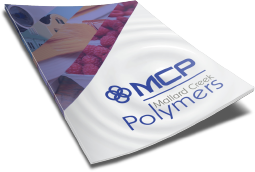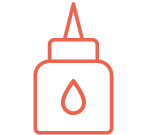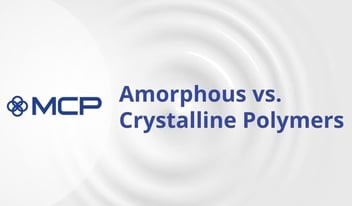
Synthetic Emulsion Polymers: Chemistry and Applications A synthetic emulsion polymer is a milky liquid that is used to manufacture many products we encounter every day. From barrier coatings on food wrappers to the pressure-sensitive adhesive of a..
Synthetic Emulsion Polymers: Chemistry and Applications
A synthetic emulsion polymer is a milky liquid that is used to manufacture many products we encounter every day. From barrier coatings on food wrappers to the pressure-sensitive adhesive of a sticky note to the liquid applied waterproofing membrane under shower tiles, these polymers are ubiquitous. For example, waterborne coatings using emulsion polymers are the most widely used type of coating technology in the world.
Polymerization occurs when a number of chemical units, or monomers, are linked together by covalent bonds. Homopolymers form from like monomers, and copolymers form from two or more different monomers — such as styrene and butadiene. A synthetic emulsion polymer is created when the polymerization process takes place in water, using free radical emulsion polymerization.
The scientists at Mallard Creek Polymers practice five different types of polymer emulsion chemistries — and unique products can be created within each of these polymer families.
- Styrene-butadiene latex (SB latex) has a high crosslink density that gives it toughness, strength, and elasticity. Chemist can manipulate the polymer composition to create polymers with unique properties suited for the end-use application. These unique properties make SB latex suitable for many applications requiring superior water resistance, good balance of tensile and elongation, excellent adhesion to difficult substrates, and high filler loading. Some examples are moisture vapor barrier coatings for food packaging, carpet backcoatings, and liquid applied membranes for shower stalls.
- Acrylic polymer emulsions are versatile synthetic polymer emulsions that can be built to achieve an array of properties. Acrylic polymer emulsions are most commonly produced from methyl methacrylate, methyl acrylate, acrylic acid and butyl acrylate. Chemists can tailor acrylic polymer emulsions for a variety of end-use applications by combining the appropriate hard and soft monomers. Acrylic polymer emulsions are notable for their good water, UV and heat resistance, higher solids, their ability to crosslink and good adhesion to low surface energy (LSE) substrates.
- Styrene-acrylic emulsion polymers are produced from styrene and acrylate esters (methyl methacrylate, butyl acrylate, 2-etylhexyl acrylate, acrylic acid and others). These versatile compounds, like all polymers, can be created from a variety of different acrylic monomers to build a random copolymer with a specific glass transition temperature (Tg). Styrene-acrylic polymer emulsions are ubiquitous in every market where water-based systems are used because of the array of specific properties that can be achieved. A styrene-acrylic polymer, in contrast to an all-acrylic polymer, will have better water resistance yet will cost less to produce. Styrene-acrylic polymers also feature higher gloss, good weatherability and good stain resistance.
- Resin supported emulsions (RSEs), a subset of styrene-acrylic emulsion polymers, are emulsions built on an alkali soluble resin. This results in an emulsion with low minimum film formation temperature (MFFT) relative to the polymer’s glass transition temperature. MFFT is the lowest temperature at which an emulsion will uniformly coalesce when laid on a substrate as a thin film; measuring MFFT accurately is important to ensure products cure correctly under specific application conditions. RSE products have flexibility and a range of applications similar to traditional styrene-acrylic emulsion polymers. They are often chosen because they have high gloss, high mechanical stability and high pigment and filler binding/loading. Plus, the rheology of RSEs is more Newtonian, which means their viscosity is less dependent on shear rate.
- Vinyl acetate-based polymers are built from vinyl acetate monomers, which are low-cost and readily available. Polyvinyl acetate homopolymers, one of the major families of vinyl acetate-based polymers, are produced using vinyl acetate monomer in the presence of polyvinyl alcohol and cellulosic stabilizers. Another type of vinyl acetate-based polymer is vinyl acetate ethylene emulsion, which is a copolymer of vinyl acetate and ethylene. This copolymer provides improved adhesion, water resistance and flexibility. A third common type of polymer in this family is vinyl acrylic latex, a copolymer of vinyl acetate and usually butyl acrylate that has improved flexibility and water resistance. Vinyl acetate-based polymers typically cost less to make, and they possess a number of desirable properties, including low levels of volatile organic compounds (VOC), high viscosity, high mechanical stability and good adhesion to common substrates.
- Nitrile elastomers are emulsion polymers produced using rubber polymerization techniques. Also known as nitrile emulsions, these are uniform colloidal dispersions of acrylonitrile and butadiene — or sometimes styrene copolymers, which provide toughness — in water. Nitrile elastomers are crosslinkable and frequently used because of their highly elastomeric, resilient nature. Nitrile elastomers have excellent oil, solvent, water and chemical resistance. They are also resistant to tears and abrasions. Because nitrile elastomers tend to yellow upon aging, they are not recommended for exterior applications. They are, however, ideal for beater-add gaskets, abrasion paper, masking tape, and coal tar sealer, among other applications.
Synthetic emulsion polymers are constantly finding their way into a variety of innovative applications due to their versatility. Mallard Creek Polymers can work with you to find an existing synthetic emulsion polymer that fits your end use — or develop a new one. Contact us today to discuss what we can make for you.

 Construction
Construction
 Nonwovens
Nonwovens
 Adhesives
Adhesives
 Textiles
Textiles
 Printing & Packaging
Printing & Packaging
 Paper
Paper
 Paints & Coatings
Paints & Coatings





